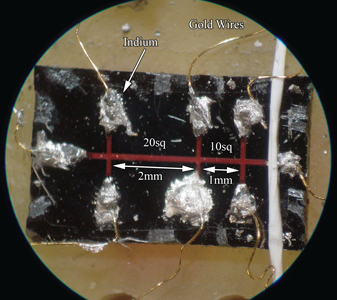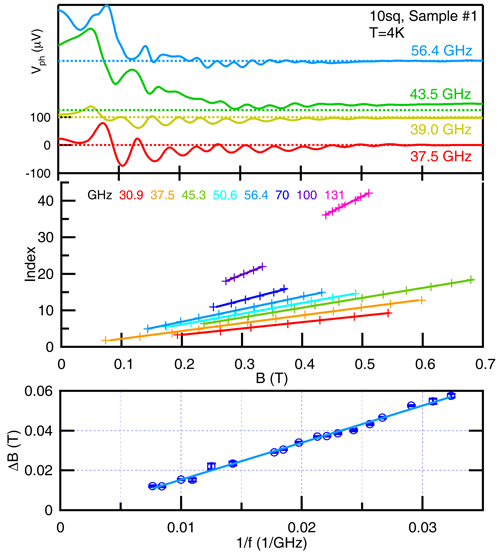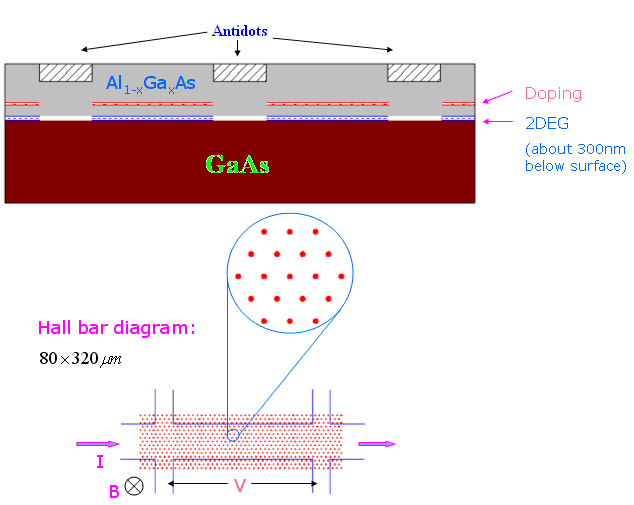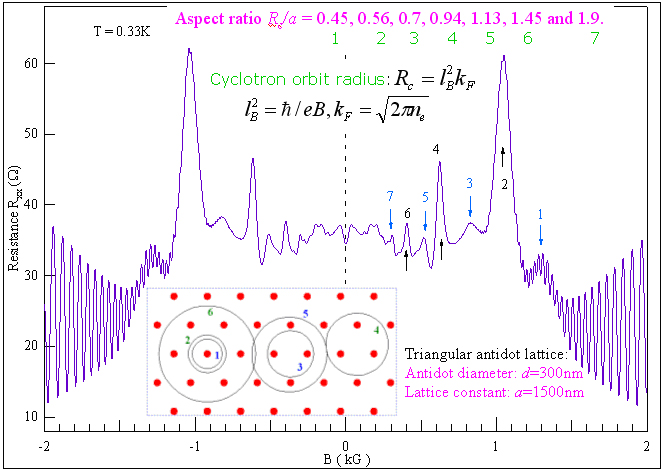
Irradiating a high-mobility, two-dimensional electron system (2DES) with GHz microwaves causes microwave-induced resistance oscillations (MIRO) at He3 temperatures when a magnetic field B is swept at low fields. In addition to MIRO and Shubnikov-de Haas (SdH) oscillations, a resistance oscillation with B-periodic magneto-oscillations has recently been discovered. These new oscillations have been attributed to the interference of edge magnetoplasmons emitted from the potential probe leads along the length of the 2DES Hall bar a distance L apart. These edge magnetoplasmon oscillations (EMPO) had previously not been reported in samples where a MIRO signal was strong enough to study. We explored the relationship between these two signals by taking photovoltage and photoresistance measurements on a 2DES AlGaAs/GaAs heterointerface over microwave frequencies ranging from 27 - 130 GHz.


Two dimensional electron gas (2DEG) is a very good and clean system for research on electron transport. In the past years, there were many amazing discoveries on it, such as……. To have better understanding on the electron scattering on 2DEG, artificial 1D or 2D periodic scattering centers were introduced on this clean electron system. The artificial 2D periodic scattering centers are the so-called antidote lattices. Usually, there are three ways to introduce antidote lattices on 2DEG in GaAs samples. The first one is that the antidote lattices are fabricated by Ga focused ion beam implantation. The energy Ga ions beam hits on the sample surface resulting in Ga ions dwell on the surface to form antidote lattices. The second one is to use electrostatically induction. With lithography technique, a grid of gate electrode can be defined on the sample surface. By changing the gate voltage, the local electrons can be depleted so that an antidot pattern is transferred on the 2DEG. The third method is make local damages on the sample surface to form antidote lattices. As this is the way we are using, we will describe it in more details. We coat the sample with PMMA photoresist and define an antidot lattice pattern on the photoresist with e-beam lithography. Then we use reactive ion etching to etch the sample surface. These local damages on the surface will deplete the electrons below them so that antidot lattices can be achieved on 2DEG.


Dr. Rui-Rui Du
rrd@rice.edu
Rice University Physics & Astronomy
Dell Butcher Hall Rm. 170
1900 Rice Blvd. Ent. 20
Houston, TX 77005
>Office Phone: 1-713-348-5780
>Lab Phone/Fax: 1-713-348-5719